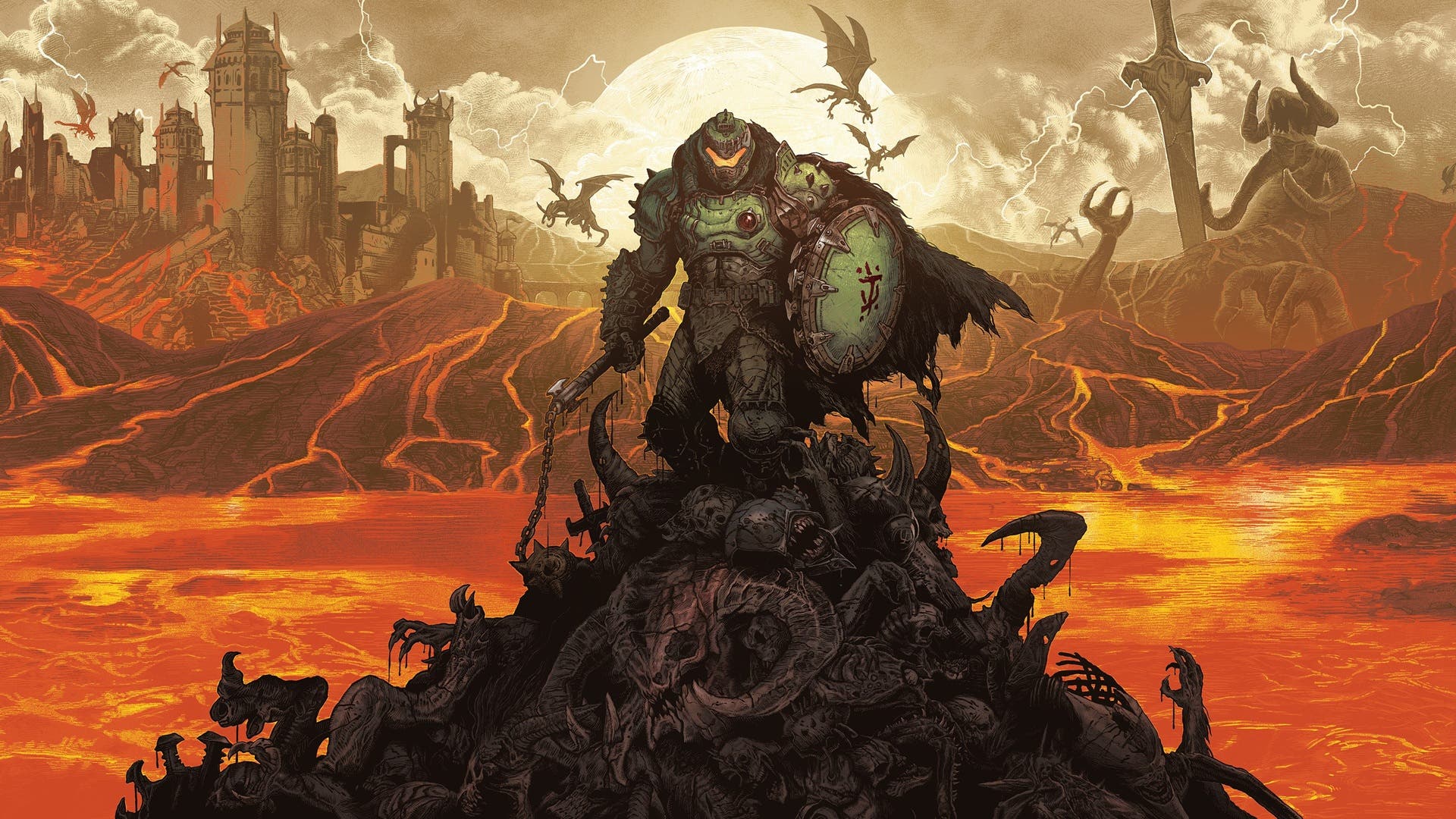I loved DOOM (2016), but when it came to DOOM Eternal, it was a game I tolerated but didn’t really like. With DOOM: The Dark Ages, I feared that I wouldn’t like it, especially for a game with such a focus on parrying. Those fears have been allayed, because I wholeheartedly love this top to bottom. The Dark Ages feels clever and timely to be an action FPS with a parry system that feels like nothing else, where the action never lets up and doesn’t disappoint. DOOM: The Dark Ages lets you ripeth and teareth in the days of future past with great impunity for an unforgettable campaign of carnage.

Medieval futurism rules, and the story that unfolds, serves as a prequel to the events of DOOM (2016). The DOOM Slayer is back to being mysterious, and has aura again. For the first time we see the DOOM Slayer leashed, restrained, and called upon only when necessary. And when he’s let loose, he’s utterly badass even in these early days. DOOM: The Dark Ages puts a larger emphasis on story and cutscenes, all contributing to the lore of this series. We’re introduced to the villain, Prince Ahzrak and learn about his motives and the war that ensues. To the game’s credit, the campaign starts off with many things in motion, making it feel like you’ve joined halfway through, with its blisteringly fast pacing. Hands down the story is the best it has ever been, but it’s not really why you’re here.
One of the first things you’ll notice once you’re in control of the DOOM Slayer is the movement. It’s slower, tankier, and more deliberate. He’s far from glacial, because even though he can’t dash, he can sprint. And when he gets moving, he feels like a runaway train. The speed at which you swap weapons is noticeably slower here, and this is by design. Like the systems that follow, this game negates all the complaints I had coming from DOOM Eternal, and is so much better for it.
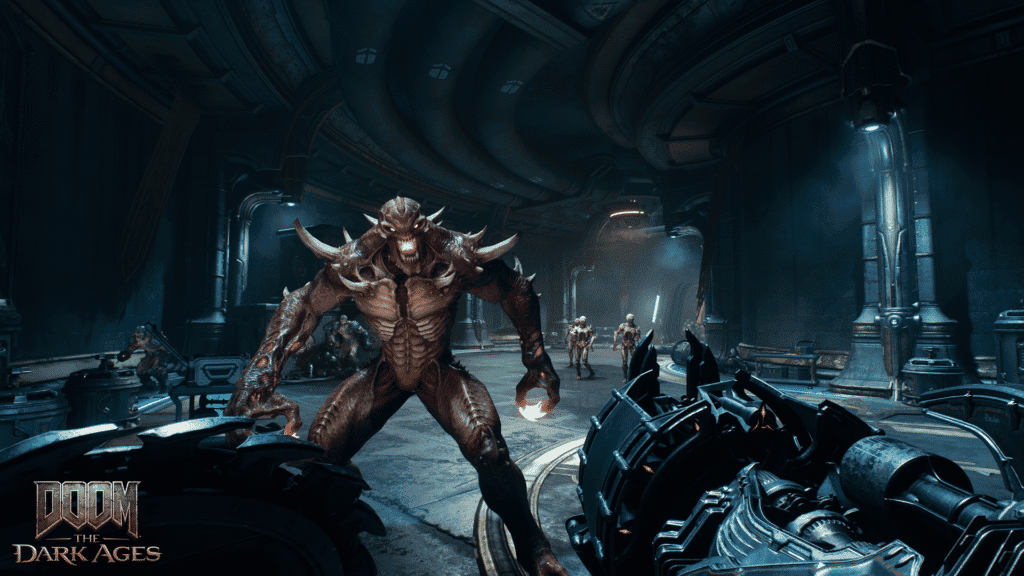
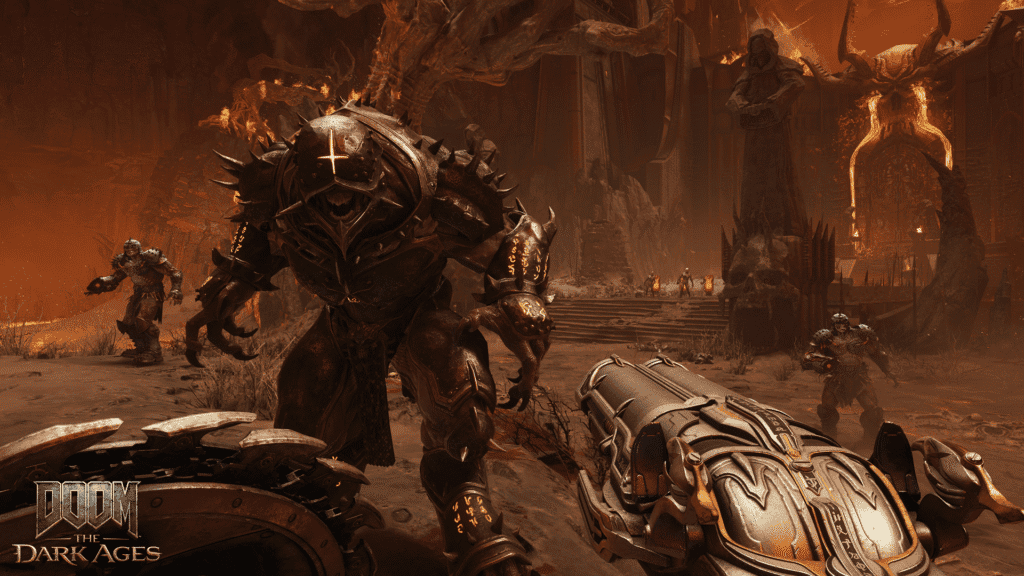
The next thing you’ll find, is that the DOOM Slayer is toting both a gun and a shield. It’s not long before that shield becomes a shield saw, essentially replacing the chainsaw and so much more. He can throw the shield saw like Captain America, and recall it like Thor – and trust me, you’re worthy. The shield has many uses: it can be a weapon, a way to block incoming fire, and most importantly, parry incoming attacks. The parry mechanic is telegraphed perfectly, all green-colored attacks from enemies are something you can parry. This will deflect the projectile or damage to its attacker, and you’re able to stun it and inflict damage of your own. The shield can only take so much damage, and will need to recharge before you can use it to stop incoming damage. In preview coverage, I thought the gameplay loop of blocking and parrying would feel rote or even bothersome for a first-person shooter like DOOM, but no. This is perhaps the biggest surprise, I adore this system, and it’s a blissful experience to utilize it to its fullest. The rhythmic bullet hell mixed with traditional first-person shooting marries extremely well here.
The arsenal that makes up the weapons of DOOM: The Dark Ages are paced well. It’s not long before alternate version appear, and they can now transform with just a button press. The shotgun you start with makes the game feel like a turkey shoot with its pinpoint accuracy, but once you get the super shotgun, it becomes a gib-fest. The shredder goes from a machine gun analog to the impaler, acting like a railgun. The plasma accelerator becomes the cycler, offering a double-barrel of blue electricity. Then you have the pulverizer that uses the bones of your enemies as ammo. The chainshot unleashes a metal ball of fury as it dismantles enemies with ease. The grenade launcher serves as a downgraded rocket launcher, and learning its arc as it lobs its explosives is a skill you want to master. Every weapon is unique, and you’ll swap between them not because you have to, but because you want to.
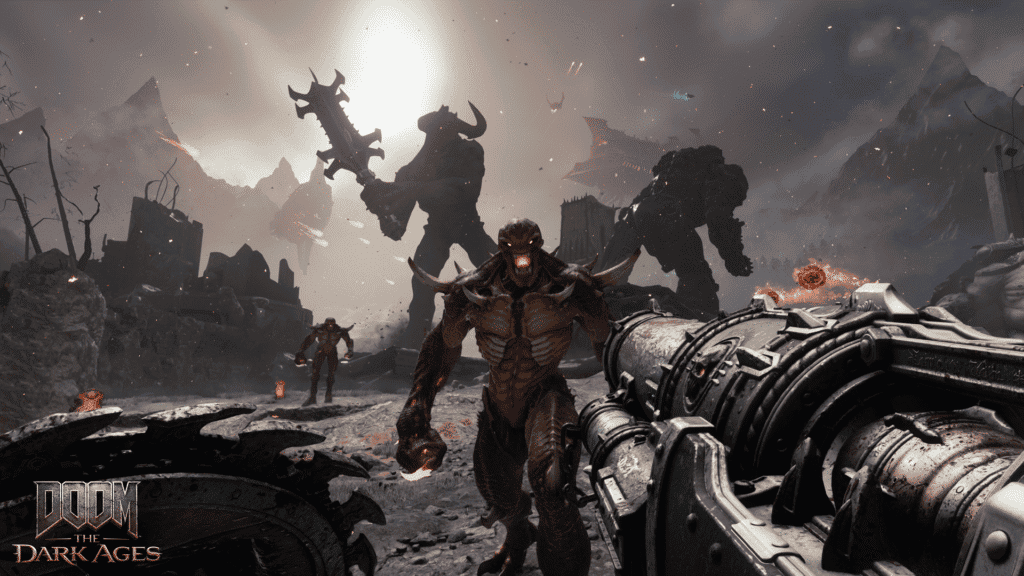
Combat is punchy and tense on the whole, but above all it’s really satisfying. Sprinting around the battlefield, picking up ammo and health to then shoot a shield with the plasma rifle to see it turn bright red as it heats up, throwing the shield saw to break that shield and all the ones nearby as armor shards fly back to me and protect me, to then switch to the chainshot that deals a devastating blow to my target to then complete an execution that tops off my health is sublime. And this is a scenario that repeats throughout the campaign, and you’ll never get enough of that feeling. Instead of getting some weak melee, you have the choice between three kinds: a gauntlet, a flail, and a mace. Each of them deal various kinds of damage, from single to multiple targets of focus. Everything has an upgrade path, allowing you to focus in on particular weapons for expanding their combat prowess, or spreading upgrades evenly across them all.
Each chapter of the game offer locales unlike anything we’ve seen in the series to-date. You’ll explore forests, castles, and even industrial complexes that further aid the medieval futurism aesthetic. Each level is open, and encourages exploration. Levels aren’t timed, but yet you feel like you should move through them fast. There are environmental puzzles to solve, and you’ll use the shield saw and the abilities around it to solve them. On top of that, there are walls to climb, but you’ll do this automatically, as there’s no platforming to be had here.
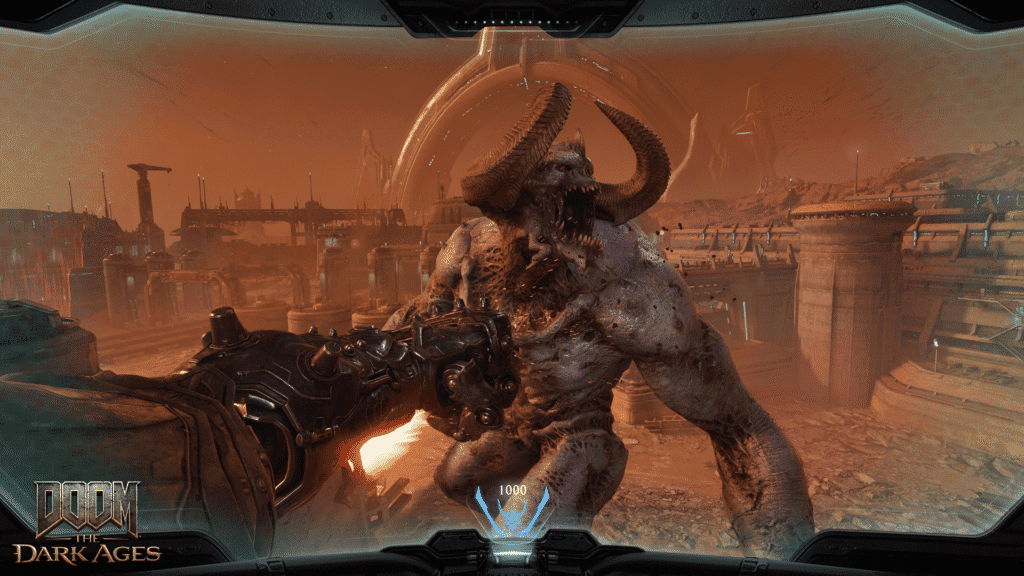
Combat is more than just shooting weapons you’ve collected, there are sections where you’ll have to mount a turret and fend off waves of demons. Doing so will charge up a bolt that does massive damage against titans, and allow you to stop the onslaught. Aside from fighting in first-person, you’ll have sections where either board a mech or ride a dragon. The mech is known as an Atlan, and it’s similar to piloting a Jaeger in “Pacific Rim”, and you’ll tear through areas like Mechagodzilla, complete with an atomic breath-like finisher on the bigger enemies. Boarding your dragon kind of turns the game into Panzer Dragoon as you will fly around, take out targets, and remove the enemy threat. These levels are built around flying, and it feels great even if the shooting feels on-rails. Both the dragon and mech levels still require precision, dodging, parrying, and it fits so well and doesn’t feel anything but awesome in practice.
After a certain point, the game will introduce challenges to complete for gold, which allows you to purchase weapon upgrades at sentinel shrines. There will also be statues that hold rubies that allow for more of the advanced upgrades. So if you want to see everything, you’ll need to look in every nook and cranny. While you can upgrade your weapons, you can also increase the DOOM Slayer’s power by seeking out tougher enemies with corresponding icons to increase his maximum life and shields. Runes are back, and allow you to further customize the game to fit your preferred playstyle.


There sure are a lots of imps in this game, each with a unique twist and design. Many DOOM favorites return here like hell knights, mancubus, titans, lost souls, chaingun soldiers, and cyberdemons. New to this game are invisible variants, tentacles, tanks, and pinky riders. Learning each of their attacks, how to parry them, and ultimately defeat them becomes second nature after not too long. Though they can overwhelm you at any time, so you can’t ever rest easy until they’re all gone. I only died a few times, but the game will remind you that the parry essential with every enemy.
There’s a staggering 22 chapters to this game. Now, there are some levels that break-up the action and events, but that doesn’t artificially do anything to the game. You can easily spend up to a half an hour in a level seeking secrets or just exploring for the sake of it. Compared to the two previous games, this game is longer than the both of them combined, so look at spend at least 20 to 25 hours for the campaign. I initially played on ‘Hurt Me Plenty’, but ratcheting that up to ‘Ultra-Violence’ felt just as good. If parrying is not something you enjoy or find too difficult, you can make the parry window bigger. If you want to make things harder for yourself and shorten the parry window, that’s there for you. In fact, every aspect of the game’s difficulty is customizable.
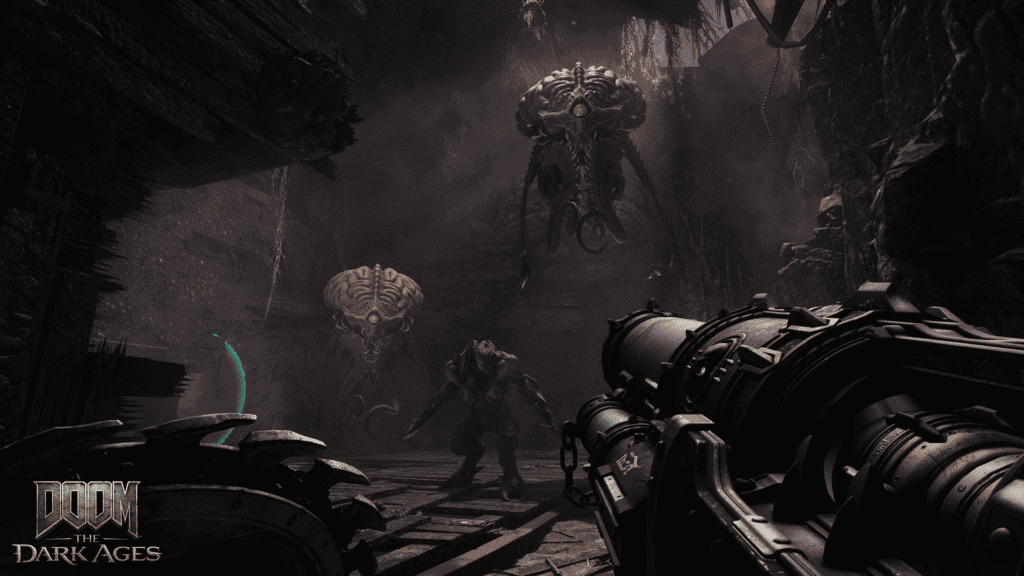
This time, there’s no multiplayer or supplemental modes to the campaign, and I don’t miss it at all. The campaign is simply massive, and I’m dedicated to achieving 100% on each of the chapters. There are extras in the menu like a collectible viewer, modifying skins for weapon, slayer, Atlan, and dragon. There’s also milestones to view, and work towards achieving. There’s a detailed codex that gives you information on the weapons, characters, enemies, and locations, with it all looking like the Necronomicon. If the holographic DOOM Slayer doesn’t do it for you, the classic style is available to switch to and looks great.
I’ve gone this far and haven’t mentioned the music, that’s because I found the game’s soundtrack to be the weakest in the series yet. Finishing Move scored this, and while it retains the guitars and metal tone, it doesn’t reach the heights of either of its predecessors. Not having Mick Gordon or Andrew Hulshult here is noticeable, and disappointing. In cutscenes, the tracks are a great fit. During exploration they are appropriately ambient, but subdued. But it’s during combat where the tracks fall flat in contrast to the action happening on-screen.
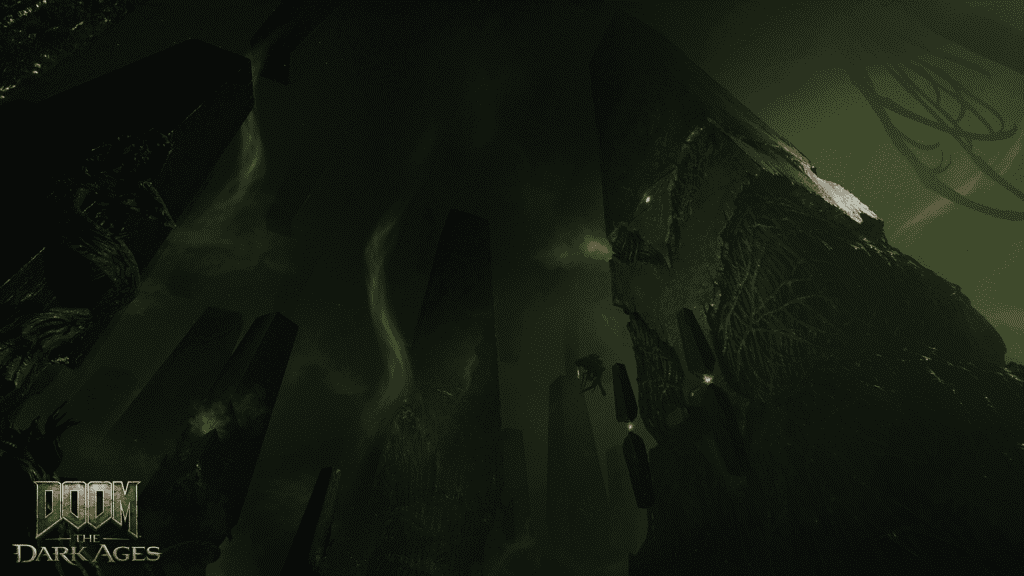
Bethesda sent me the upcoming GameReady 576.31 drivers from NVIDIA, and I used them for this review.
The game runs on idTech 8, making this game the first to run on this engine. I was shocked to see the game go from the main menu to the level in three seconds. It’s unbelievably fast, and runs beautifully. I was able to get 125fps in most of the open levels with everything maxed. I will note that I had DLSS enabled with ‘DLAA’, Frame Generation turned on, and NVIDIA Reflex enabled. Even with that said, the Vulkan API just runs so lightweight and breezy, it compliments the gameplay of DOOM so well. If you have a reasonably powerful PC, you should be able to get great framerates.
My PC Specs:
– Microsoft Windows 11 Pro
– Intel Core i9 13900K @ 5.8GHz
– ASUS ROG RYUJIN II 360 ARGB AIO Liquid CPU Cooler
– G.SKILL TRIDENT Z5 6000MHZ 64GB (32×2) DDR5 RAM
– ASUS ROG Strix GeForce RTX 4080 16GB GDDR6X
– WD_BLACK SN850X M.2 (4 TB)
– LG UltraGear 34GP950B-G (21:9 Ultrawide @ 3440×1440)
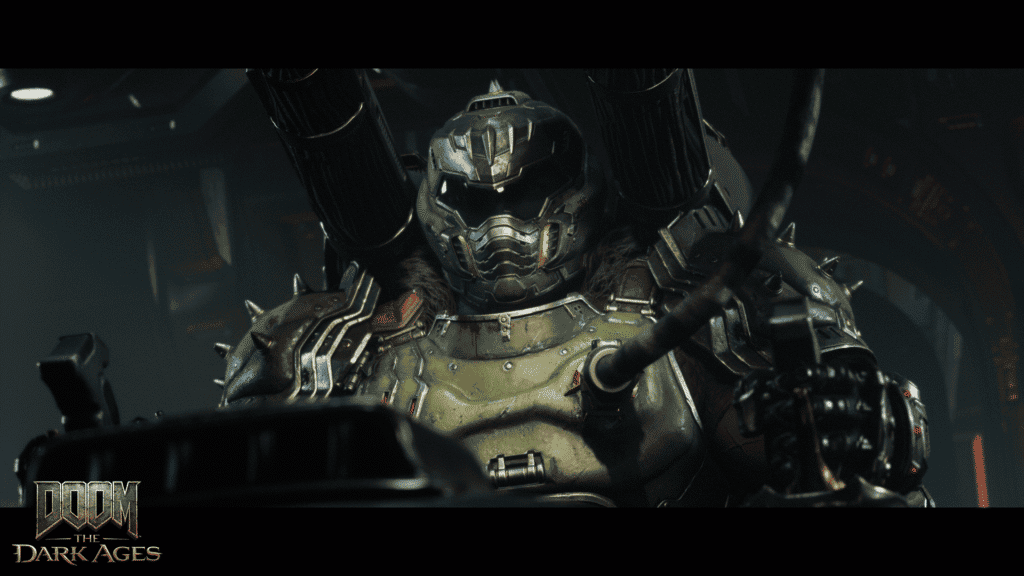
DOOM: The Dark Ages is id Software firing on all cylinders. This game fixes everything I didn’t like about DOOM Eternal, and enhances everything I loved about DOOM (2016). It’s a first-person shooter that smartly incorporates timing and challenge in a whole new way, with lots of replayability. A customizable parry window ensures The Dark Ages can be for anyone, regardless of skill level. DOOM: The Dark Ages finds refinement upon excellence to be a bright spot in the dark ages for this third and hopefully not final entry for the venerable first-person shooter.
A Steam code was provided in advance by Bethesda for review purposes
